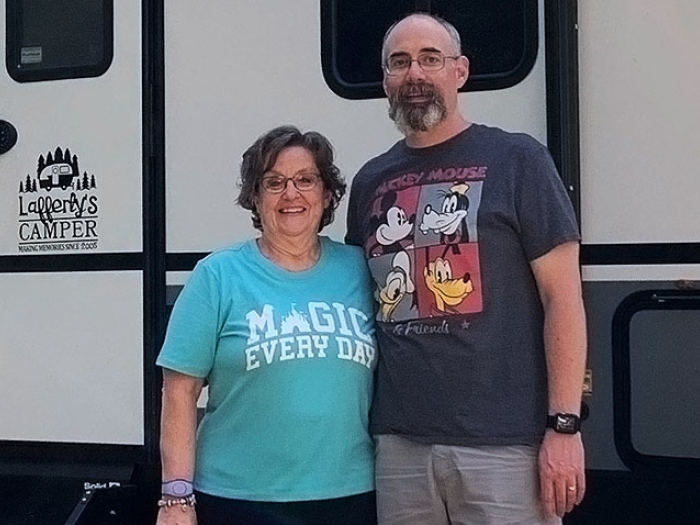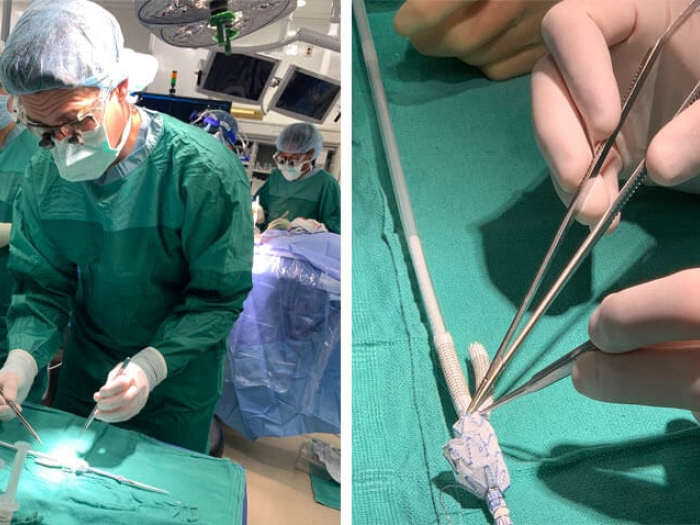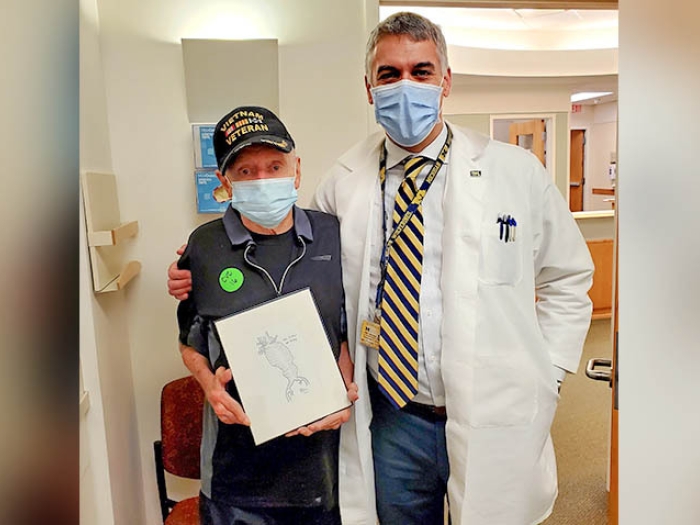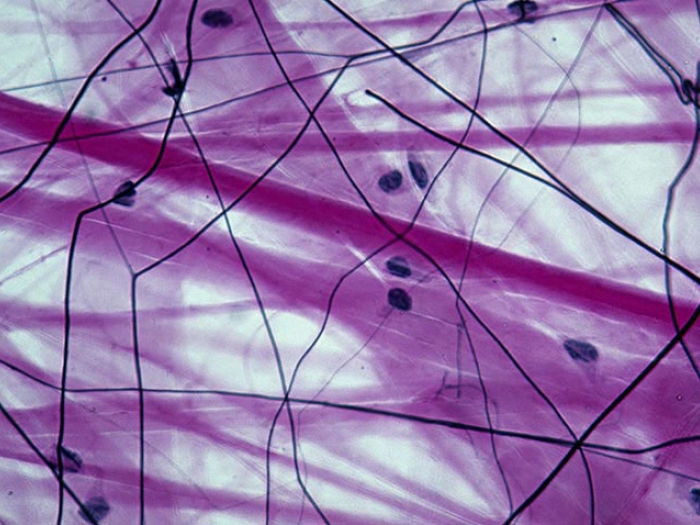A young mother’s life-threatening condition was discovered just in time. Today, she feels blessed to have her life back.
7:00 AM
Author |

Aimee Bingham learned the hard way that life's path can take an unexpected detour.
The healthy mother of two boys and avid runner was just 35 when she was diagnosed with an aortic aneurysm — one so big that doctors feared the worst.
MORE FROM MICHIGAN: Sign up for our weekly newsletter
An aortic aneurysm is defined as an enlargement of the aorta. Although age, family history and some lifestyle factors are thought to play a role, it isn't clear how such aneurysms develop or progress.
Completely asymptomatic, Aimee was having her yearly physical exam in 2010 when her primary physician detected a heart murmur.
Following a gut instinct, Aimee's doctor scheduled her for an emergency echocardiogram at the University of Michigan the next day. This was Aimee's first scare.
A second scare soon followed: a call from her primary physician telling her to go straight from her home in Manchester, Michigan, to U-M's emergency department, where a team of doctors would be waiting for her.
A startling diagnosis
An aortic aneurysm can occur in the chest (thoracic aortic aneurysm), the abdomen (abdominal aortic aneurysm) or in both places (thoracoabdominal aortic aneurysm). The majority occur in the abdomen.
Aimee learned that she had a very large thoracic aortic aneurysm measuring 7.5 centimeters in diameter. Aneurysms greater than 5 centimeters are considered dangerous, so there was no question that her condition was serious.
SEE ALSO: When Aortic Aneurysm Symptoms Mean Surgery, Teamwork Matters
A thoracic aortic aneurysm can occur in three areas:
-
Ascending aorta, which emerges from the heart's left ventricle
-
Aortic arch, the part of the aorta that arches and turns downward before it becomes the descending aorta
-
Descending aorta, which branches into the thoracic and abdominal aorta
No time to waste
Aimee's aneurysm extended from the thoracic aortic root through the ascending aorta into the aortic arch — a condition that would require extensive surgery.
She was immediately admitted to the University of Michigan Frankel Cardiovascular Center Intensive Care Unit to be monitored until surgery could be scheduled with cardiac surgeon G. Michael Deeb, M.D.
"This patient was facing a catastrophic event without surgery, but she was young and strong," says Deeb, a world-renowned expert in aortic-related diseases.
During the nearly eight-hour open-heart surgery, Aimee's aortic valve, ascending aorta and arch were replaced with a tissue valve and a Dacron woven graft, a strong, flexible synthetic graft used to replace diseased aortic segments.
In addition, she required bypass grafts to replace portions of the two vessels that extend from the aortic arch to supply blood to the head.
After surgery, "Aimee's prognosis was good," says Deeb.
Her swift recovery — celebrated by friends and family, including sons Brandon (then 13) and Gabe (then 8) — began with walks on a treadmill.
It didn't take long for Aimee to regain her stride: Nine months after surgery, she completed her first half-marathon.
New outlook on life
Having the ability to exercise offered a physical and emotional boost.
SEE ALSO: How Sports Cardiologists Help Athletes Train and Play Safely
"I just wanted to feel healthy again," Aimee says. "I don't quit. I'm not a fast runner, and I'm not a great athlete, but running makes me feel alive. Being able to run again meant my heart was healthy. It eased my anxiety."
It also led to her involvement in setting up a women's Epic Heart Hero program for the annual American Home Fitness Detroit Women's Half Marathon, 10K and 5K event. The Epic Heart Hero program acknowledges women who have come back from a heart issue and have taken control of their heart health. The races will take place Sept. 16.
Aimee runs with a group she calls "heart sisters" — women who also have overcome heart disease and provide strength through life's ups and downs.
"We support each other and show that it's possible to come back from heart disease to live healthy lives," she says.
Her life has changed in other ways, too. Three years ago, a surprise pregnancy resulted in the birth of her daughter, Lydia. The two share a birthday: Sept. 12.
Despite it being considered a high-risk pregnancy, Aimee says she was "determined to have this baby. I just felt like it would be OK."
During the pregnancy, Melinda Davis, M.D., of the Michigan Medicine Women's Heart Program, monitored Aimee. Today, the patient continues to see Davis for yearly exams, echocardiograms and electrocardiograms.
"I feel good and am taking good care of myself," says Aimee, now 42, noting that she has so much to live for — including her heart sisters.
"When anyone needs anything, we are there for them," she says. "I know if something happens to me and I'm fighting for my life, I'll have the support of my family and my heart sisters."

Explore a variety of healthcare news & stories by visiting the Health Lab home page for more articles.

Department of Communication at Michigan Medicine
Want top health & research news weekly? Sign up for Health Lab’s newsletters today!





